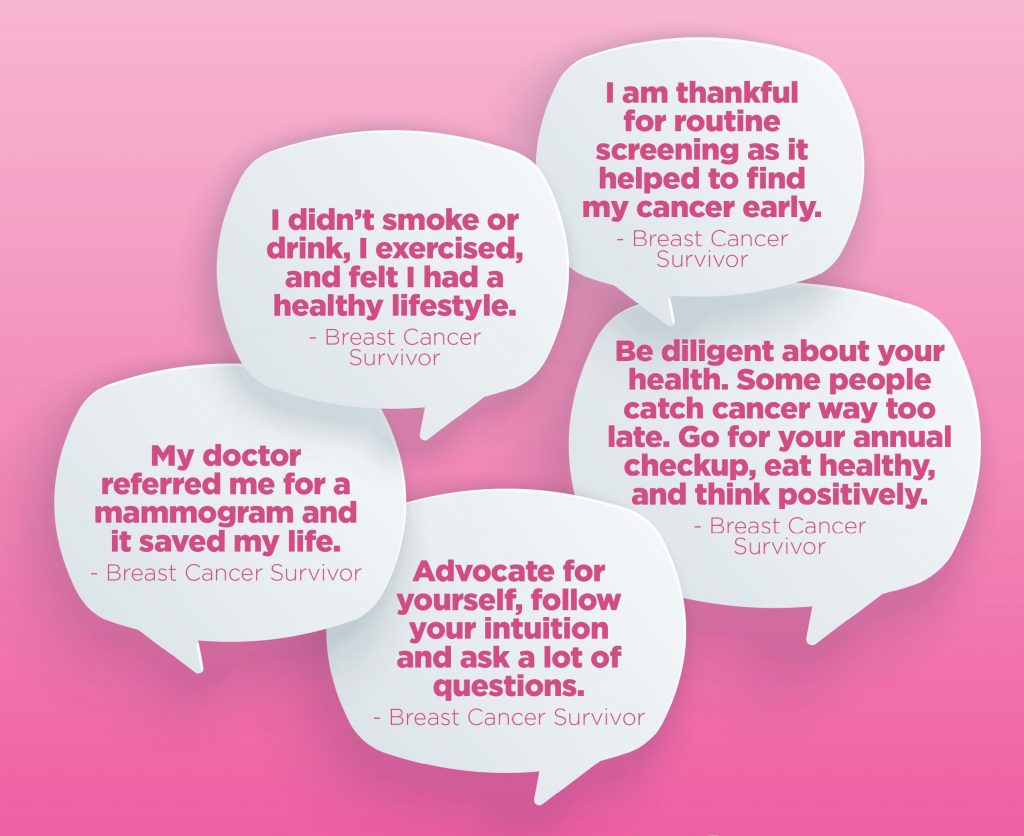New Cancer Awareness Campaign Features Survivors Sharing Their Stories
by Caitlund Davidson
 For the survivors, this campaign provides an opportunity to connect with others, and share the advice and resources that helped them throughout their journey.
For the survivors, this campaign provides an opportunity to connect with others, and share the advice and resources that helped them throughout their journey.October is Breast Cancer Awareness Month and Prevention & Screening Clinical Services at Thunder Bay Regional Health Sciences Centre (TBRHSC) is launching a campaign that features stories from individuals who have gone through the breast cancer journey as a patient, advocate or supporter. This campaign aims to spread awareness about the cancer journey, encourage early detection and show support to others going through similar experiences.
“As primary care physicians, we speak from our perspective, but the patient is the one that goes through each step of the journey and each has a unique story,” said Dr. Nicole Zavagnin, Regional Primary Care Lead for Ontario Health – Cancer Care Ontario at TBRHSC. “It is invaluable for the public and providers to hear these survivor stories.”
For the survivors, this campaign provides an opportunity to connect with others, and share the advice and resources that helped them throughout their journey. “I shared my story for this campaign because it raises awareness and helps the cancer community feel seen,” explained one of the breast cancer survivors. “Being vulnerable and open helps others to feel safe to do the same. It creates a space for healing. Every cancer story is unique and it can feel lonely at times. If sharing my story helps one other person going through something similar to feel less alone, then it was worth it.”
These stories will begin to be shared in October and continue running for the remainder of 2022. They can be found on the Screen for Life Coach Northwest and TBRHSC social media pages, and in print.
One common theme throughout these stories is to be diligent about your health: be breast aware so that you can recognize changes in your breasts and stay up to date with your routine cancer screening appointments.
Breast cancer is the most common cancer in Northwestern Ontario women but it is also has one of the highest survival rates of all cancer types. Finding cancer early can lead to more treatment options and better outcomes.
“As primary care physicians, our role is to educate patients about early detection and cancer screening options, along with the risks and benefits,” Zavagnin explained. “We then allow the patient to make the best decision for them in terms of their life values and priorities.”
The Ontario Breast Screening Program (OBSP) recommends that:
- Most people ages 50 to 74 who are eligible for the OBSP get checked every two years with a mammogram.
- People ages 30 to 69 who meet the High Risk OBSP eligibility criteria get checked once a year with both a mammogram and breast magnetic resonance imaging (MRI) (or screening breast ultrasound if MRI is not medically appropriate).
Talk to your family doctor or nurse practitioner about your breast health and breast screening options. To learn more, visit www.tbrhsc.net/cancerscreening. If you live in a First Nation community, contact your nursing station or health centre for more information.